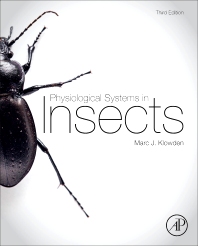Books in Entomology
Books in Entomology
- 1st Edition
- October 22, 2013
- G. A. Kerkut
- English
- eBook9 7 8 1 4 8 3 2 8 6 2 2 8

Comprehensive Insect Physiology, Volume 10
- 2nd Edition
- October 22, 2013
- Raphael Ikan
- English
- eBook9 7 8 0 0 8 0 5 1 2 4 2 6

Natural Products
- 2nd Edition
- October 22, 2013
- Larissa Bailey + 1 more
- English
- eBook9 7 8 1 4 8 3 2 8 8 0 9 3

Honey Bee Pathology
- 1st Edition
- October 22, 2013
- Marjorie A. Hoy
- English
- eBook9 7 8 1 4 8 3 2 9 3 7 1 4

Insect Molecular Genetics
- 2nd Edition
- October 8, 2013
- David W. Onstad
- English
- Hardback9 7 8 0 1 2 3 9 6 9 5 5 2
- eBook9 7 8 0 1 2 3 9 7 2 3 3 0

Insect Resistance Management
- 3rd Edition
- May 15, 2013
- Marc J. Klowden
- English
- Hardback9 7 8 0 1 2 4 1 5 8 1 9 1
- eBook9 7 8 0 1 2 4 1 5 9 7 0 9

Physiological Systems in Insects
- 3rd Edition
- April 9, 2013
- Marjorie A. Hoy
- English
- Hardback9 7 8 0 1 2 4 1 5 8 7 4 0
- eBook9 7 8 0 2 4 0 8 2 1 3 1 3

Insect Molecular Genetics
- 1st Edition
- March 23, 2013
- Sylwester Chyb + 1 more
- English
- Hardback9 7 8 0 1 2 3 8 4 6 8 8 4
- eBook9 7 8 0 1 2 3 8 4 6 8 9 1

Atlas of Drosophila Morphology
- 1st Edition
- December 2, 2012
- Morton Beroza
- English
- eBook9 7 8 0 3 2 3 1 6 0 5 7 5

Chemicals Controlling Insect Behavior
- 1st Edition
- Volume 44
- December 2, 2012
- Ephraim Cohen
- English
- Hardback9 7 8 0 1 2 3 9 4 3 8 9 7
- eBook9 7 8 0 1 2 3 9 4 6 0 9 6
